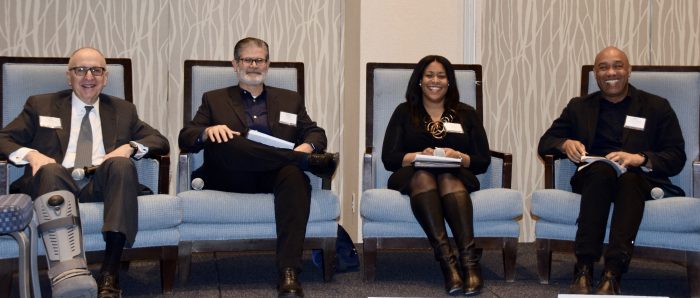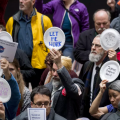From selfie-sticks to robotic docents, modern museums face modern challenges
How do social media and free speech intersect in the museum world? Who owns content created by computer algorithms and artificial intelligence? How can museums encourage diversity in their programming and collections?
These were among the many legal questions discussed in March at the 47th annual Legal Issues in Museum Administration conference, cosponsored by the American Law Institute Continuing Legal Education and the Smithsonian’s Office of General Counsel.
Established in 1973, LIMA has long served as the premier opportunity for museum professionals to convene to discuss the impact of various laws on the museum community. This year’s sold-out conference, which included more than 300 participants from across the country, was held in Washington and featured a number of Smithsonian panelists and speakers. The conference convenes in-house museum counsel, museum directors, other museum and non-profit professionals, and outside counsel, who provide a wealth of knowledge on a broad range of topics. This year’s highlights included a panel discussion on the conference’s overarching them – diversity – that included Secretary David Skorton and National Museum of African Art Director Gus Casely-Hayford, who explored the topic through a variety of lenses. Stephanie Stebich, director of the American Art Museum, and Assistant Secretary for Communications and External Affairs Julissa Marenco participated on panels debating deaccessioning and addressing First Amendment issues.

Members of the panel discussion on diversity at the 2019 LIMA conference. From left, Smithsonian Institution Secretary David Skorton; Roberto Tejada, the Hugh Roy and Lillie Cranz Cullen Distinguished Professor at the University of Houston; India Pinkney, the General Counsel of the National Endowment for the Arts; and National Museum of African Art Director Gus Casely-Hayford. (Photo by Fairleigh Earhart)
Meanwhile “There are a lot of questions and not a lot of answers,” facing museums that use Artificial Intelligence, said Lauryn Guttenplan, associate general counsel at the Smithsonian, during a session on “Hot Topics in Intellectual Property.” According to The Art Newspaper, museums may need to determine “who owns the work product generated by a machine.” The question could be important at the Smithsonian, where 20 donated robotic docents, each named Pepper, are greeting and redirecting visitors and answering questions. If Pepper can learn to provide more sophisticated answers, “what are the privacy implications? If a visitor discloses an interest in butterflies, can the development office use that information to solicit a gift?” Guttenplan asked.
The conference is a valuable resource not only for attorneys, but also for registrars and museum administrators, scholars, and students. Speaker Danee Gaines Adams, the Smithsonian’s Privacy Officer, describes LIMA as “a continuing educational experience that everyone working in, or partnering with, a museum or library should attend,” noting that she looks forward to going every year. National Collections Program Director, Bill Tompkins, who has been attending the conference for nearly 30 years, echoed that sentiment: “LIMA 2019 did not disappoint! The program topics, course materials, and faculty presentations were very diverse, highly informative, and inspiring – an experience which will guide my daily decision-making and programmatic activities.”
The 2020 conference will be held March 18 – 20 in Miami. Those interested in attending are encouraged to keep an eye out for further information on next year’s conference, including discounted registration fees for Smithsonian staff.
This update on LIMA 2019 was provided by Laura Damerville, Assistant General Counsel for the Smithsonian Institution.
Posted: 26 April 2019
-
Categories:
Administrative News , Education, Access & Outreach , Feature Stories , News & Announcements







